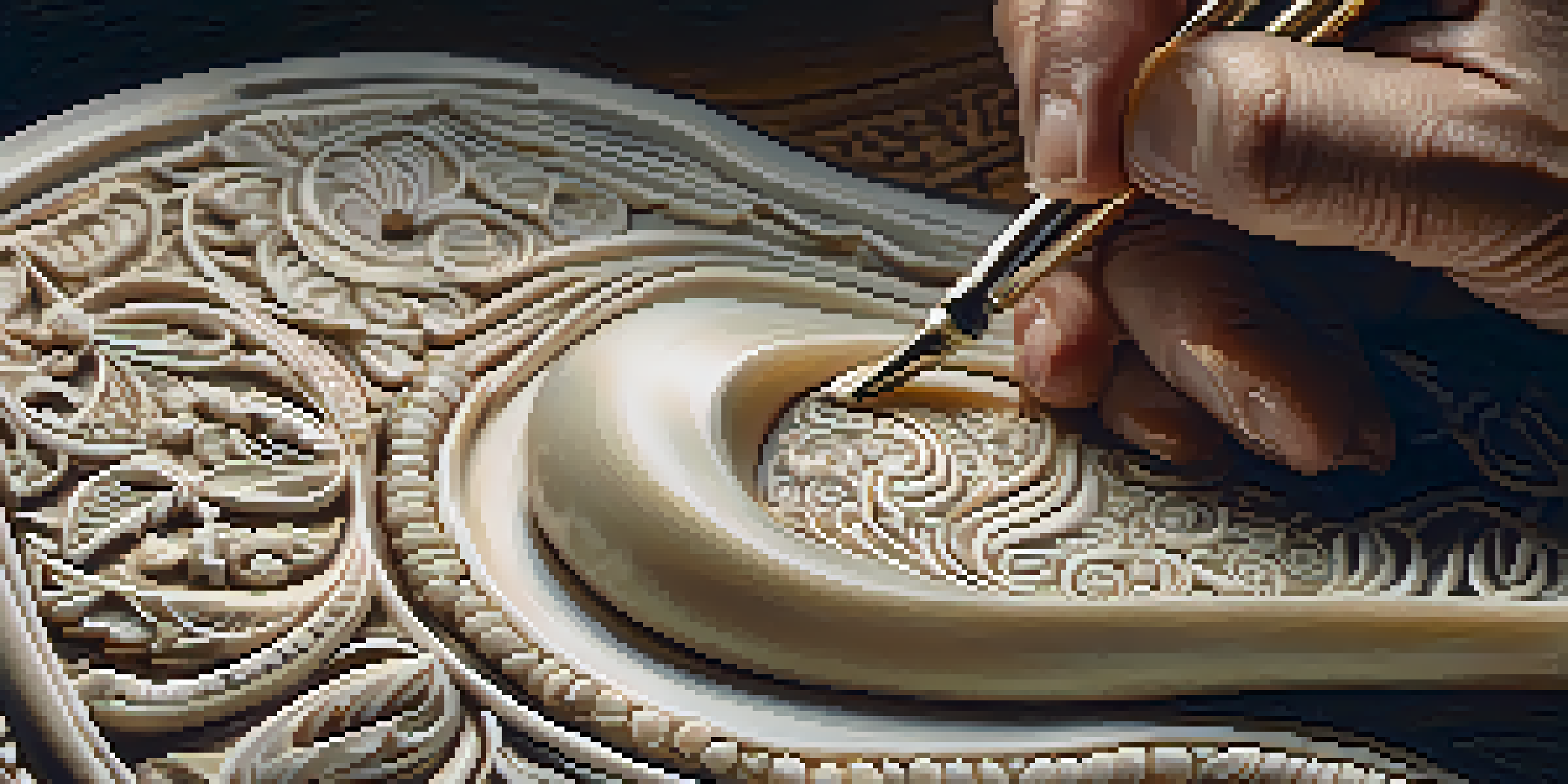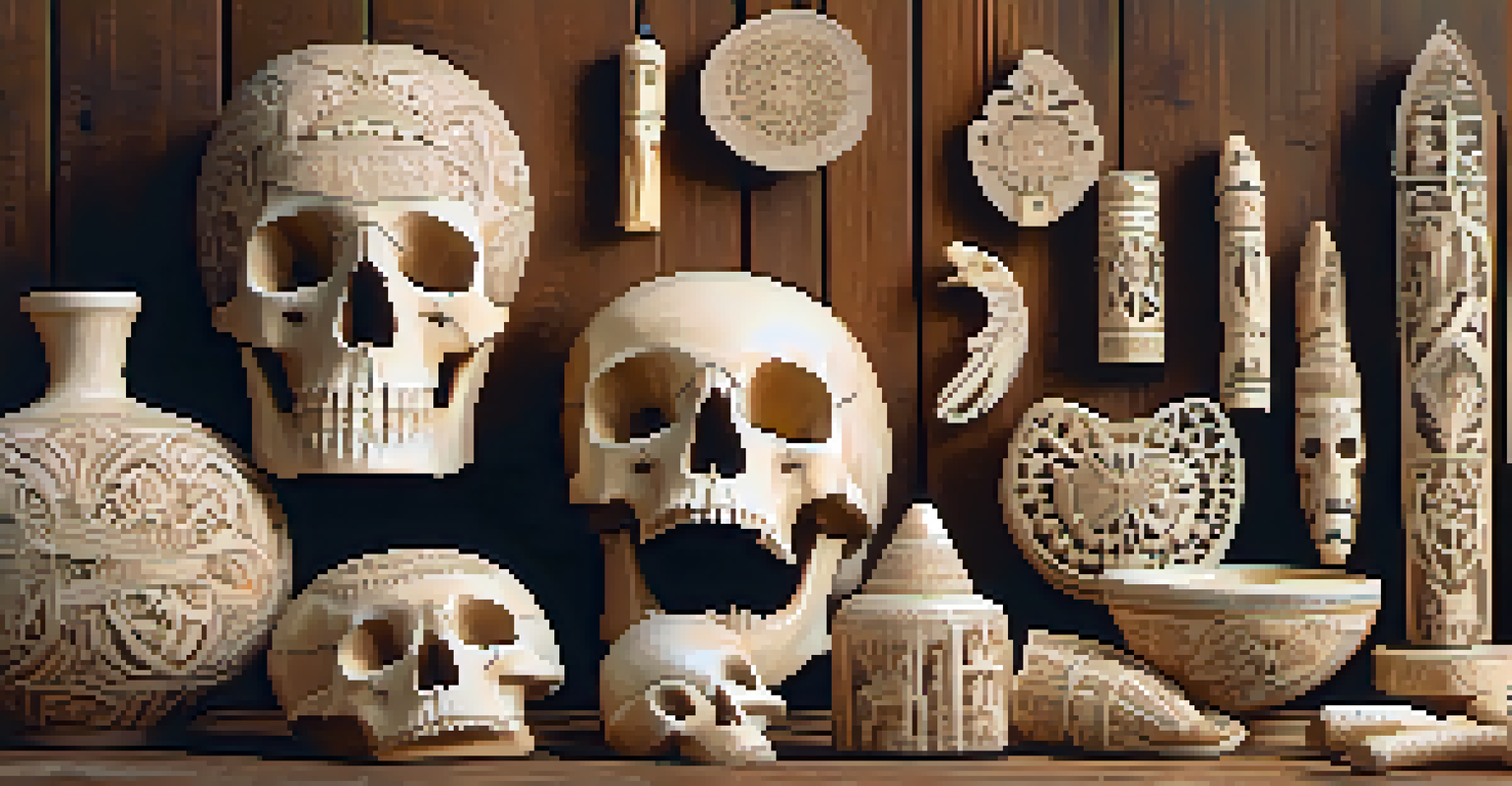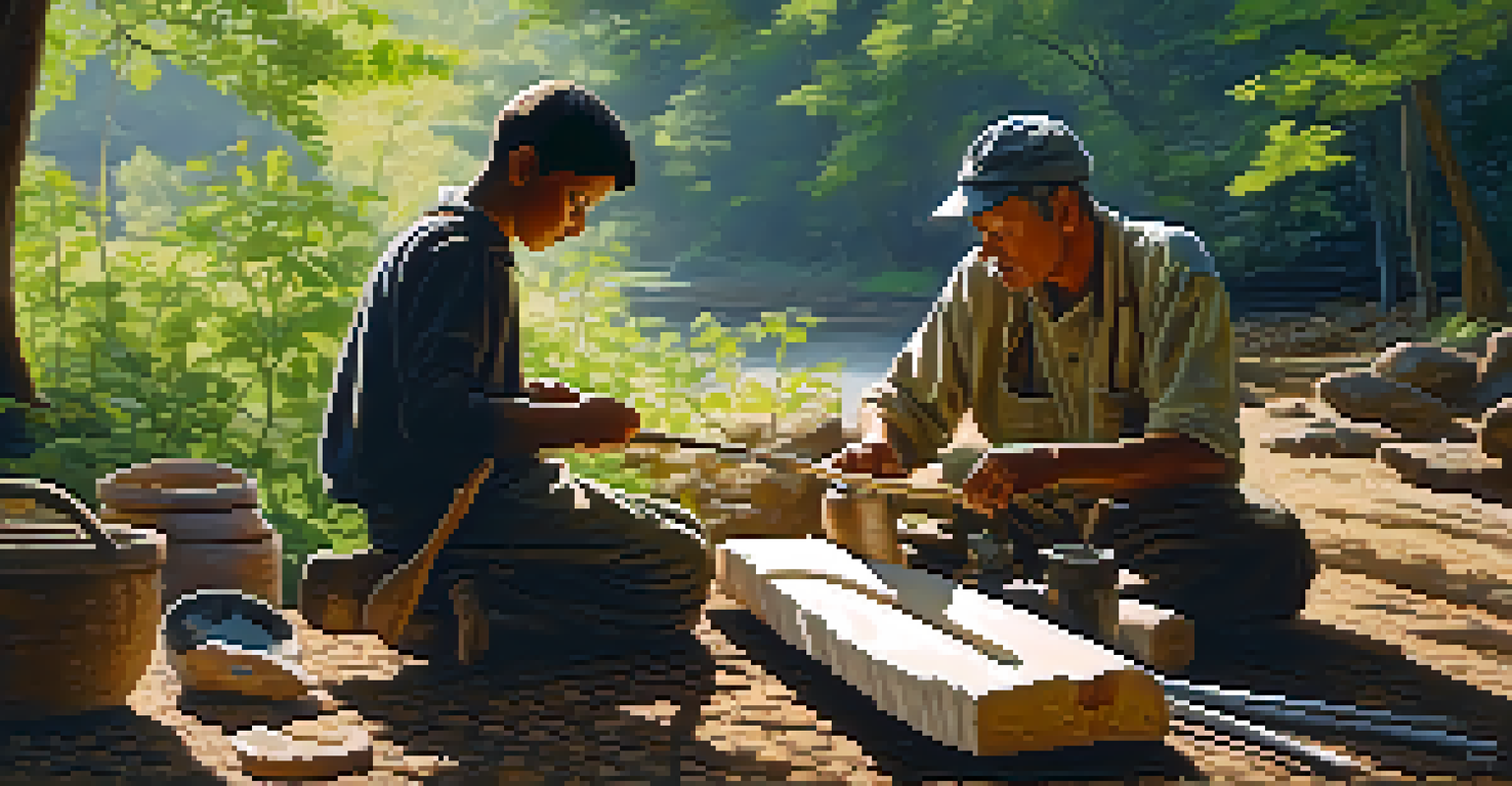Assessing the Environmental Costs of Bone Carving

Introduction to Bone Carving and Its Popularity
Bone carving has become an intriguing art form, capturing the attention of artisans and collectors alike. With its roots in various cultures, this craft often utilizes animal bones to create intricate designs and functional items. As its popularity grows, it's essential to take a closer look at the environmental implications of the materials and processes involved.
Art is the most beautiful of all lies; it is a mirror that reflects the reality of our world, including its environmental challenges.
While bone carving can be seen as a sustainable practice when using by-products from the meat industry, it raises questions about sourcing and waste. Some artists may source bones from unsustainable practices, leading to detrimental effects on wildlife populations. Understanding the nuances of this art form can help us appreciate both its beauty and the environmental costs associated with it.
In this article, we will explore the environmental costs of bone carving, examining the sourcing of materials, the ecological impacts, and potential ways to mitigate these effects. By doing so, we can advocate for more responsible practices within this beloved craft.
Sourcing Materials: Sustainability vs. Ethics
The sustainability of bone carving heavily depends on where the bones come from. Many artisans use bones from animals that are already deceased, often sourced from local farms or meat processing facilities. This practice can be ethical and sustainable, as it minimizes waste and utilizes materials that would otherwise be discarded.

However, not all sourcing practices are created equal. Some carvers might resort to hunting or sourcing from endangered species, which poses severe ethical and ecological dilemmas. It's crucial for both artists and consumers to be aware of the origin of the materials and to support practices that prioritize sustainability and animal welfare.
Sourcing Matters in Bone Carving
The sustainability and ethics of bone carving hinge on the responsible sourcing of materials, emphasizing support for artisans who prioritize ethical practices.
By choosing to purchase from artisans who are transparent about their sourcing practices, we can support an industry that respects both the craft and the environment. This decision not only encourages ethical practices but also fosters a culture of responsibility within the bone carving community.
The Ecological Footprint of Bone Carving
Every art form has an ecological footprint, and bone carving is no exception. The process of carving, polishing, and finishing bones can require various resources, including water, energy, and chemicals. These factors contribute to the overall environmental impact of the craft, making it crucial to assess how these materials are used.
Sustainability is not a destination, but a journey that we must all embark on together to ensure a better future.
Moreover, the demand for unique and exotic bone materials can lead to overexploitation of certain species. This not only threatens biodiversity but can also disrupt local ecosystems. As consumers, we must recognize our role in this cycle and consider the broader implications of our purchases.
Understanding the ecological footprint of bone carving allows us to make informed choices. By advocating for sustainable practices and supporting artisans committed to minimizing their impact, we can help protect the environment while enjoying this beautiful art form.
Cultural Significance and Its Environmental Impact
Bone carving has deep cultural roots in many societies, often symbolizing traditions, spirituality, and connection to ancestors. However, as these cultural practices become commercialized, there can be unintended consequences for the environment. The balance between preserving heritage and protecting the planet is delicate and requires thoughtful consideration.
In some cultures, specific animals hold symbolic importance, and their bones are used in traditional carvings. If these species face threats from overharvesting, it can lead to cultural loss as well, as artisans may find it increasingly difficult to source the materials they need. Thus, the cultural significance of bone carving must be weighed against its environmental impact.
Ecological Impact of the Craft
Bone carving has an ecological footprint that can threaten biodiversity, making it vital for consumers to understand their role in promoting sustainable practices.
Promoting sustainable harvesting methods and raising awareness about the importance of biodiversity can help protect both cultural practices and the environment. By valuing both aspects, we can foster a future where traditions thrive alongside ecological stewardship.
Mitigating Environmental Costs: Best Practices
Mitigating the environmental costs of bone carving requires a collective effort from artisans, consumers, and policymakers. One effective approach is to promote the use of reclaimed or ethically sourced materials, which can significantly reduce the ecological footprint. This means prioritizing bones that are by-products of the food industry or sourced from sustainable practices.
Additionally, adopting eco-friendly processes in the carving and finishing stages can lessen the environmental impact. Using natural dyes, water-based adhesives, and non-toxic finishes can make a notable difference. Artists who incorporate these practices not only reduce their ecological footprint but also appeal to a growing market of environmentally conscious consumers.
Education and awareness are crucial in driving change within the industry. By supporting artisans who prioritize sustainability and sharing knowledge about the importance of ethical sourcing, we can foster a culture that values both artistry and environmental responsibility.
Consumer Responsibility in Bone Carving
As consumers, we play a vital role in shaping the future of bone carving. Our purchasing choices can either support sustainable practices or contribute to harmful ones. By being mindful of where and how bone carvings are produced, we can influence the industry towards more responsible methods.
Before making a purchase, consider asking questions about the sourcing of materials and the artist's practices. Supporting artisans who are transparent about their processes not only helps ensure ethical sourcing but also encourages others in the industry to follow suit. This advocacy can create a ripple effect, promoting sustainability across the board.
Consumer Choices Shape Sustainability
Consumers influence the future of bone carving by choosing to support artisans who are transparent about their sourcing and committed to environmental responsibility.
Being a responsible consumer means recognizing the impact of our choices. By prioritizing sustainability in our purchases, we can contribute to a healthier planet while enjoying the beauty and craftsmanship of bone carving.
Conclusion: Balancing Artistry and Environmental Care
In conclusion, assessing the environmental costs of bone carving is essential in our modern world. While this art form holds cultural significance and can promote sustainability, it also poses challenges that require careful consideration. Striking a balance between artistry and environmental care is crucial for the longevity of the craft.
As we continue to appreciate the beauty of bone carvings, let’s remember the importance of supporting ethical practices and advocating for sustainability in the industry. By doing so, we not only preserve the artistry but also protect the environment and the species that contribute to it.

Ultimately, a conscious approach to bone carving can lead to a thriving community of artists who are dedicated to both their craft and the planet. Together, we can ensure that this beautiful tradition continues to flourish for generations to come.